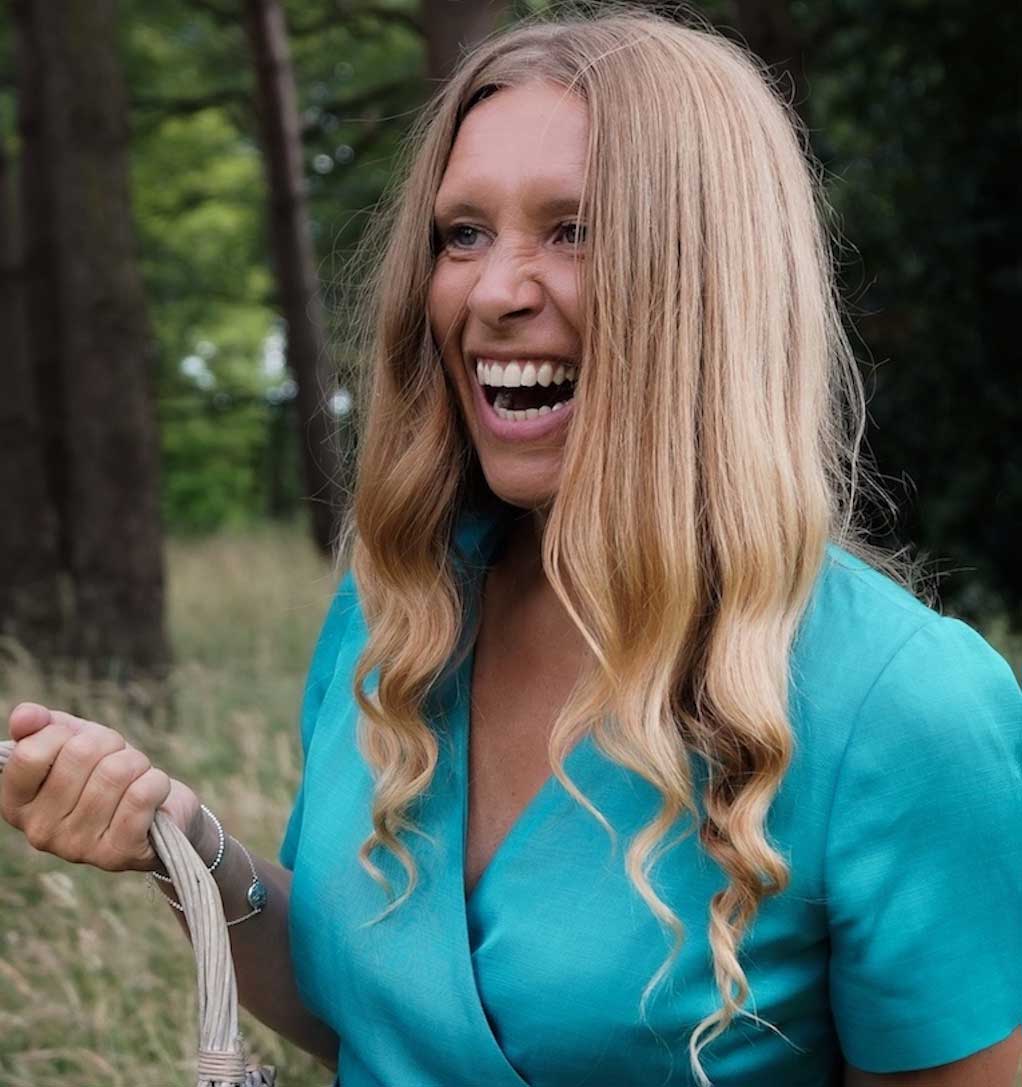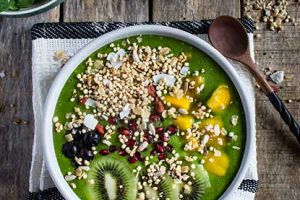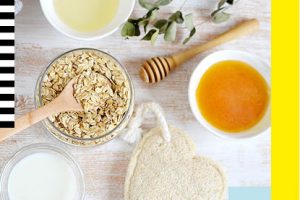How diet could be the key to psoriasis treatment

I still remember clearly how my own personal battle with psoriasis began.
I was fifteen, it was the year of my GCSE exams and my parents were in the middle of an acrimonious divorce. I was dealing with so much angst and stress, and my skin bore the brunt.
Of course, I didn’t know at first that the little spots that popped up all over my body were called psoriasis. Neither, it seemed, did my doctor.
FIRST IMPRESSIONS
His first diagnosis was a condition called scabies – essentially mites burrowing into my skin to lay eggs, which in turn caused an itchy, red rash to form on the surface. I felt as disgusted as the condition sounds.
My doctor prescribed a course of antibiotics and I was told it should disappear in a week or so. It didn’t. As it turns out, scabies would have been a blessing! At least there was a way to get rid of it.
A fortnight later, my doctor took another look at my skin and correctly diagnosed psoriasis. He was chatting away about this skin condition and as a teenager I’d zoned out, until he stated ‘there is no cure’. I was confused. Surely I just needed a different pill or alternative cream, he was my doctor, there must be something he could do?
And so began a twenty-year journey with various steroid creams, coal tar shampoos and greasy emollients. I tried anything and everything to get rid of this horrible condition. I searched for alternatives – acupuncture, Chinese tea, aloe vera gel and fish oil capsules. I covered my patches in gel blister plasters, I tried bathing in apple cider vinegar – nothing worked.
PRIVATE CARE DIDN’T PAY
Frustrated, I decided that paying for my medical care might provide the solution, perhaps a private doctor would know more than my NHS dermatologist. I was prepared to pay him for the cure.
I went to my local BUPA hospital where a doctor gave me four pots of cream. The idea was to begin with a low dosage and gradually work up to find a strength that worked on my psoriasis. I began with pot one. It burned and discoloured my skin overnight, it stained my pyjamas, my white duvet cover was covered in black patches, this stuff was the worst. I never even attempted pot two.
As it turns out, I wasn’t the only one to suffer these horrific side effects. Even patients subscribing to clinical trials refused to continue with the treatment due to burning and staining. Psoriasis was destroying my life.
MISSED OPPORTUNITIES
Looking back, there were so many events in my twenties that should have been such happy experiences. I hated student life and dropped out of university before I’d even completed a term. Dating felt stressful. I’d get a few weeks into a relationship and often end it before it had really begun, petrified of having to get undressed and explain these bright red patches all over my body.
In braver months, I’d front it out and pretend my skin didn’t bother me, until a stranger would make an inconsiderate remark. I remember being asked in the supermarket once whether I’d burned myself. I was pulled to one side at airline check-in in Egypt by staff wanting to know whether my skin was contagious.
Seemingly ordinary, supposedly enjoyable life events became highly stressful. Even the simple things such as friends’ summer weddings or BBQ parties felt like such a huge deal.
Trying to find a pretty summer dress with long sleeves was impossible. I’d end up wearing a shirt or cardigan, which inevitably itched and scratched my painful arms in the heat.
Sweaty and sore, I resolutely refused to remove it, the pain being more bearable than the endless stares and insensitive comments.
My skin emotionally drained me and left me feeling exhausted and miserable.
HITTING ROCK BOTTOM
This stressful, vicious cycle and frustrated, unhealthy relationship with my skin did nothing to help my psoriasis patches. I self-medicated with alcohol, somehow believing that if I drank enough on a night out I wouldn’t care what people said. Weekend nights blended into weekday evening drinking. Somehow opening a bottle of red wine after work each day numbed the pain.
I’d wake up the following morning feeling tired, foggy and massively dehydrated. My skin looked even more aggravated and angry than usual. I was never really a fan of coffee, so Diet Coke became my morning thirst quencher, my hangover cure and my energy boost. I was stuck in this unhealthy loop and lacked any motivation to break the cycle.
Six years ago I suffered my worst flare-up ever. My business was close to collapse, I’d just split up with my boyfriend, it was January and the combination of Christmas parties and New Year celebrations had resulted in complete over-indulgence. I felt fat, exhausted and depressed.
These emotions were reflected in my skin. Not only did I have the usual patches of psoriasis on my elbows and knees, but tiny dots had begun popping up all over my body, seemingly getting worse by the day. Within a week I was covered.
My eyelids felt so painful I could barely open my eyes, this stuff covered my scalp, tufts of my hair began falling out and my body was so sore I couldn’t even stand the feeling of clothes against my skin.
I went back to my doctor and this time he suggested something stronger – a chemotherapy drug designed to suppress my immune system to stop my body attacking itself.
I remember sitting in my GP’s surgery thinking’ ‘have my health and skin deteriorated to such an extent that I need cancer medication to get myself well again?’
Seeing my shocked expression, my doctor suggested I take time to think about it. I searched online for more information. The side effects of this drug included potential liver failure.
In fact, being on it required fortnightly checks to ensure my organs were functioning correctly and still my doctor issued the caveat that this was not a cure. At best it would offer temporary remission.
I couldn’t take the risk, I decided there and then to turn the medication down and began my search for a better solution.
FOOD FOR THOUGHT
Whilst the theory of suppressing my immune system made sense, I couldn’t understand why we weren’t looking to regulate it instead. Surely, rather than dampen everything down, getting my system back on an even keel would be the more sensible idea?
I came across studies on curcumin (the active ingredient in turmeric) and shiitake mushrooms, both of which highlighted immune-modulating properties. I started thinking, if mushrooms and a simple spice could demonstrate such incredible effects, what else could food do for me?
I vowed to make a change. I set myself a target of one month and dramatically transformed my diet and lifestyle. I stopped drinking alcohol, I quit sugar, I went fully plant-based and switched from drinking cola at breakfast to cold-pressed vegetable greens.
My skin got worse. Our skin is the body’s largest organ of detoxification, so toxins coming out during a cleanse can be a perfectly normal part of healing. From everything I’d read I was anticipating this, but that didn’t make it any easier.
CHANGING TIMES
On day fourteen something changed. I woke up and my skin didn’t feel quite as aggravated or itchy as usual. The bright red patches somehow looked paler and pinker.
Each day after that I’d see some level of positive change. Those small improvements became my motivation and after twenty-eight days I went out in short sleeves for the first time in years. It was February and freezing, but I didn’t care! This was a miracle.
Unless you were up close, you’d never even know I’d had a skin condition. Simple diet and lifestyle change had resulted in something two decades of medication had never achieved for me.
I was so excited. Not only had no doctor ever told me diet could do this, they’d actively advised me that changing what I ate would make absolutely no difference to my skin. I began to share my results on social media and posted my diet plan and recipes in an online blog.
Gradually people from all over the world began to message and share their amazing results with me. That blog eventually became my best-selling book Radiant – Recipes to Heal Skin from Within.
I’ve sold 25,000 copies around the world, which has led to thousands more people reaching out to me with their amazing transformation stories.
Looking back at it now, makes absolute logical sense that a chronic inflammatory skin condition would benefit from an anti-inflammatory diet.
I think I always knew deep down that diet played a significant role in my skin, but my doctor’s refusal to acknowledge it made me lazy and complacent.
GUT INSTINCT
Finally, studies are showing what I know has been the answer for me and thousands of others who have experienced this amazing psoriasis healing journey – our gut health is key when it comes to chronic disease.
The gut is cited as a map of our skin. If we can focus on developing a strong and healthy gut microbiome, the symptoms we see on the surface of our skin will disappear.
Making these changes requires commitment and dedication. It’s simple, but it isn’t always easy.
Finding a healthy balance going forward is key to making this lifestyle sustainable and, after twenty years of letting psoriasis control me, I finally feel empowered and in control of a disease that dictated so much of my life for a very long time.
Hanna Sillitoe began sharing her personal battle with skin health through an online food blog, which eventually led to her best-selling book Radiant – Recipes to Heal Skin from Within. Hanna’s book has sold over 25,000 copies around the world and it’s the 28-day plan within this book that many of her online followers credit as having cured their skin complaints.
Use code BALANCE10 for your 10% discount at HannaSillitoe.com
Skin Healing Expert: Your 5 pillar plan for calm, clear skin by Hanna Sillitoe will be published by Kyle Books, 14th May 2020, £19.99 and is available for pre-order now.












